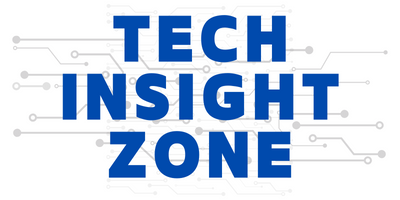The fight against climate change just got a significant boost. The Euro-Mediterranean Center on Climate Change (CMCC), a leading research institution, has joined forces with Lenovo to upgrade their supercomputer system. This isn’t just about faster processing – it’s about a whole new level of scientific power designed to tackle the complexities of climate modeling.
The new supercomputer, aptly named “Cassandra,” promises not only a massive leap in processing power but also a commitment to sustainability through its energy-efficient design.
Let’s delve deeper into why this upgrade is critical, what makes Cassandra special, and how it strengthens the CMCC-Lenovo partnership in the fight for a sustainable future.
Why a Supercomputer Upgrade is Critical for Climate Research?
Climate modeling is an intricate dance involving massive datasets and complex calculations. Imagine trying to simulate the Earth’s climate system, accounting for atmospheric interactions, ocean currents, and the influence of human activity. It’s a mind-boggling task that requires immense computational muscle.
Here’s how the upgrade empowers CMCC researchers:
| Feature | Specification |
| System Name | Cassandra |
| Manufacturer | Lenovo |
| Node Type |
180 SD650 V3 nodes
|
| CPU |
2x Intel Xeon Max 9480 CPUs (Sapphire Rapids HBM) per node
|
| Peak Performance | 1.2 PetaFlops |
| Cooling System |
Lenovo Neptune™ Direct Water-Cooling
|
| Energy Efficiency Improvement |
15% lower electricity consumption for cooling compared to air-cooled systems
|
| Future AI Expansion |
2 nodes with 8 Nvidia H100 GPUs each
|
| Installation Target |
Second half of 2024
|
-
Unleashing the Power of PetaFlops: The new High Performance Computing (HPC) system, “Cassandra”, is equipped with 180 SD650 V3 nodes with two Intel Xeon Max 9480 CPUs (Sapphire Rapids HBM). This allows it to reach a processing power of 1.2 PetaFlops peak, marking a 100% increase compared to the center’s previous solution. This increased processing power will enable the CMCC to handle complex climate simulations and data processing tasks with unprecedented speed and efficiency.
-
Drilling Deeper into Climate Scenarios: With this newfound power, researchers can create detailed climate models that encompass a wider range of variables. This allows for more precise simulations of future climate scenarios, helping us understand how our planet might change under different conditions.
-
Sharpening the Focus on Climate Impacts: By analyzing how climate change will affect specific regions and ecosystems with greater precision, CMCC researchers can pinpoint areas most vulnerable to rising temperatures, altered precipitation patterns, and extreme weather events.
-
Fast-tracking Mitigation Strategies: The ability to run complex simulations with higher fidelity allows researchers to identify the most effective mitigation strategies. This includes optimizing greenhouse gas reduction plans and developing adaptation strategies for regions most at risk from climate change.
Beyond the raw processing power, Cassandra incorporates innovative features that make it a game-changer in the world of climate research supercomputers:
Unveiling the Secrets of Cassandra: A Supercomputer Built for Efficiency
-
Cooling with Confidence: Traditionally, supercomputers rely on air-cooling systems, which can be energy-intensive. Cassandra takes a smarter approach, utilizing water-cooling technology. This keeps the machine running cool while reducing energy consumption by 15%. In the fight against climate change, every watt saved counts, and this technology demonstrates CMCC’s commitment to sustainable research practices.
-
The Potential of AI Integration: The new system is designed to integrate seamlessly with Nvidia GPUs, paving the way for incorporating artificial intelligence (AI) into climate research. Imagine AI algorithms sifting through massive datasets, identifying patterns and relationships that might escape human researchers. This has the potential to unlock groundbreaking discoveries and accelerate our understanding of climate change.
A Partnership Forged in Innovation: How the Upgrade Strengthens the CMCC-Lenovo Bond
This collaboration between CMCC and Lenovo signifies more than just a new supercomputer. It represents a powerful partnership built on shared goals and a commitment to innovation:
-
A Win-Win Scenario: CMCC gains a powerful research tool that propels their climate research capabilities forward. Lenovo, on the other hand, showcases their expertise in building high-performance, energy-efficient supercomputers, solidifying their position as a leader in the field.
-
Alignment for a Sustainable Future: Both CMCC and Lenovo are dedicated to tackling climate change. This project exemplifies their shared vision of a sustainable future and their commitment to working together to achieve it.
-
Building on a Strong Foundation: This collaboration isn’t born in a vacuum. It builds upon the success of their previous project, the “Juno” system. This successful track record strengthens their working relationship and fosters trust for future endeavors.
Final Words
The upgrade of CMCC’s supercomputer system with Cassandra is a significant leap forward in climate research. The immense processing power, coupled with energy efficiency and the potential for AI integration, equips researchers with a powerful arsenal to combat climate change.
This partnership between CMCC and Lenovo is a testament to the power of collaboration in tackling this global challenge. As they push the boundaries of scientific computing, we can expect groundbreaking discoveries that will pave the way for a more sustainable future for our planet.
Furthermore, as sustainability takes center stage, delve deeper into Xiaomi’s latest ESG report, revealing its dedicated path towards a greener future. Discover how tech giants are shaping the landscape of corporate responsibility, driving impactful change for a more sustainable tomorrow.






